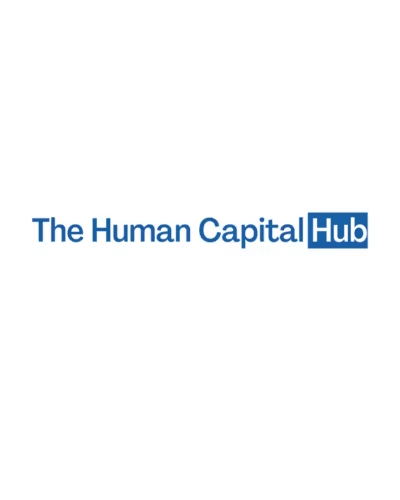Healthcare systems around the world are facing a critical staffing shortage, with estimates showing a gap of 5.9 million nurses and 4.3 million doctors. The financial burden of this crisis is staggering. Replacing a single nurse can cost anywhere from $10,000 to $88,000, and for other healthcare roles, the cost can rise to as much as two and a half times the employee’s salary.
Since the onset of COVID-19, the situation has only worsened. Around 18 percent of healthcare workers have left their positions, and nearly 17 percent of nurses globally are expected to retire within the next decade. These trends are straining the healthcare workforce like never before, driven by high turnover, rising burnout, and an aging professional base.
One solution gaining attention is shift flexibility. As rigid scheduling continues to reveal its limitations, flexible shift models are emerging as a practical way forward. By 2025, adopting a more adaptable approach to staffing could help healthcare organizations retain talent, reduce burnout, and create healthier work environments.
Why employee retention in healthcare is at a breaking point
Healthcare organizations just need to address their workforce challenges right away. The retention crisis has hit a breaking point that affects every part of the healthcare system.
Aging workforce and early retirements
The healthcare industry's workforce keeps getting older, which threatens patient care quality. About a third of registered nurses are over 50, and half of physicians have passed 55. This transformation is happening faster than ever—licensed physicians' numbers over 60 grew 48% between 2010 and 2020. The number under 50 increased by only 16%.
Healthcare professionals now retire earlier than before. Research shows all but one of these nurses and 77% of allied health professionals leave before they turn 65. The odds of early retirement doubled when organizations restructured their teams.
Experienced professionals leaving creates a knowledge gap that's hard to fill. Projections show 17% of nurses worldwide will retire in the next decade. The United States and Europe will see especially high retirement rates.
Post-pandemic burnout and stress
COVID-19 made existing retention problems much worse. At the pandemic's peak in 2021, more than 27% of registered nurses left their field—about 100,000 RNs, mostly under 35. Only 4.17% have come back as of late 2023.
Burnout has become an epidemic. Last year, 46% of health workers felt burned out often or very often, up from 32% in 2018. Workplace harassment jumped from 6% to 13% during this time.
Mental health issues among healthcare professionals have risen sharply:
- 30% of surgeons screened positive for depression while 40% met criteria for burnout
- Depression, substance abuse, and suicide rates among medical students and physicians are two to six times national averages
Younger professionals seeking better work-life balance
New healthcare workers have different career expectations. About 35.2% of providers who quit in 2021 said work-life balance was their main reason.
Rigid schedules remain a huge barrier to keeping staff. One major hospital's workforce study found that limited flex time was the second biggest reason nurses retired early. Many younger professionals will take lower pay to work fewer hours in more supportive environments.
Demanding schedules paired with personal responsibilities create too much pressure. Healthcare workers struggle to balance their work with family needs like caring for aging parents. This imbalance fuels the ongoing employee retention crisis in healthcare.
The hidden costs of rigid scheduling
Rigid scheduling practices drain finances well beyond basic staffing challenges. Healthcare organizations with high turnover rates often miss the massive financial bleeding that happens right under their noses.
Increased turnover and recruitment expenses
Staff turnover creates staggering financial effects. A single nurse's replacement costs between $40,000 and $64,000, while a physician's departure can get pricey at over $500,000. These costs range from 25% to 200% of an employee's annual salary.
Healthcare systems face millions in losses quickly. A single organization's annual turnover costs range from $5.9 million to $8.5 million. Many institutions still cling to rigid scheduling models that push their staff away.
Rigid schedules fuel this expensive cycle. Healthcare professionals leave their jobs mainly due to heavy workloads and unfair schedules. Many facilities resist the implementation of self-scheduling systems or flexible shift models.
Effect on patient care and continuity
Poor scheduling hurts patient care quality beyond just financial losses. High employee turnover creates unsafe staff-to-patient ratios that endanger patients and damage the hospital's reputation. Research shows turnover rates associate with more medical errors (odds ratio = 1.38).
Patient care continuity takes a big hit from constant staff changes. Patients need time to build trust with their providers, but frequent turnover destroys this foundation. Facilities with high turnover consistently score lower in patient satisfaction.
Staff who stay face impossible workloads that speed up burnout. This creates a vicious cycle - short-staffing causes dissatisfaction that leads to more resignations and worse staffing shortages.
Unpredictable schedules and excessive overtime drive experienced professionals with families to quit. Healthcare organizations fight retention challenges, but they don't deal very well with rigid scheduling that could break this costly turnover cycle.
How shift flexibility directly improves retention
Schedule flexibility offers a powerful solution to healthcare organizations' staff retention challenges. Research shows clear benefits that explain why turnover happens.
Better work-life balance for staff
Healthcare professionals can control their schedules with flexibility. This helps them balance their work and personal life better. 86% of nurses consider flexibility a powerful component in retention. Staff members value this schedule flexibility as much as a 10% pay raise.
Clinicians can manage their family duties, continue education, and take care of their health when they control their shifts. Staff members feel more valued and respected with this freedom. This control changes their outlook on work relationships. They can adjust their schedules as their life changes instead of choosing between work and personal needs.
Reduced absenteeism and burnout
Flexible scheduling helps curb two major retention issues: unexpected absences and professional burnout. Healthcare workers who can take time off for doctor visits and self-care rarely call in sick without notice.
Research proves that flexible work options can reduce job stress by 20%. One hospital tried a four-day workweek and saw burnout levels drop from high to consistently low. Organizations benefit too. Fewer staff members work while sick, which means less disease spread between staff and patients.
Higher job satisfaction and morale
Numbers show that flexibility creates happier healthcare workers. Recent studies reveal flexible scheduling can boost job satisfaction by 62%. Staff members with flexible schedules show 55% more commitment to their jobs.
Several factors create this satisfaction. Flexible hours strongly affect how supervisor support relates to job satisfaction (β = 0.775). Healthcare staff with schedule control feel more motivated because they work during their peak hours. Since 36% of healthcare professionals see job flexibility as vital in job choices, organizations that accept these approaches gain a big edge in hiring and keeping staff.
Implementing flexible shift models in 2025
Healthcare facilities with a vision for the future are trying new scheduling methods to keep their staff happy and engaged. These adaptable models help organizations stay competitive as they look to attract and keep talented professionals.
Self-scheduling systems
Healthcare professionals can now create their own schedules within set guidelines through self-scheduling. Digital platforms let staff pick shifts that fit their personal lives. Mercy saw great results with this approach - their nurse staffing grew by 20% in just two years. Staff members appreciate the freedom to manage their time. The numbers back this up, as 43% of self-scheduled appointments happen outside regular hours.
Float pools and on-call teams
Organizations use internal resource pools to staff multiple departments flexibly. These professionals train across specialties and pick shifts in different units based on their skills. Float pools have become "an economic necessity" for managing the workforce. They help cover vacations, maternity leaves, and unexpected absences naturally.
On-demand staffing platforms and gig-style nursing
Healthcare workers are changing their approach to work faster than ever. About half of them now prefer flexible arrangements over traditional roles. Leaders in healthcare have taken notice, with 98 percent reporting a rise in requests for gig-style work over the past two years.
Apps like NurseDash and Nursa offer prn on demand solutions that allow facilities to connect with qualified professionals who select shifts based on their own availability and preferences. This shift gives nurses and clinicians more control while helping organizations manage staffing gaps more efficiently. It’s no surprise that 96 percent of healthcare leaders believe gig-style staffing will play a key role in shaping the future of care delivery.
Technology tools for shift management
Smart scheduling software is changing how organizations manage their workforce by making complex tasks simple. AI systems calculate shift rates based on need and give analytical insights for quick staffing decisions. These workforce management tools bring several benefits:
- They cut down on paperwork through automated shift filling and absence tracking
- The right professional ends up in the right role when needed
- Staff wellness improves through balanced schedules
Healthcare organizations that use these flexible models can keep their staff happy while delivering excellent patient care.
Conclusion
The staffing crisis in healthcare is more than a numbers issue. It reflects deeper problems around burnout, rigid scheduling, and unmet workforce needs. The financial and emotional toll is high, and the current system cannot sustain itself much longer.
Flexible shift models offer a clear way forward. From self-scheduling tools to prn on demand platforms, these solutions give healthcare professionals more control over their time. When staff feel supported and trusted to manage their schedules, they are more likely to stay, feel satisfied, and provide better care.
Looking ahead to 2025, organizations that embrace flexibility will be better positioned to retain talent, improve patient outcomes, and build a stronger, more resilient workforce.



